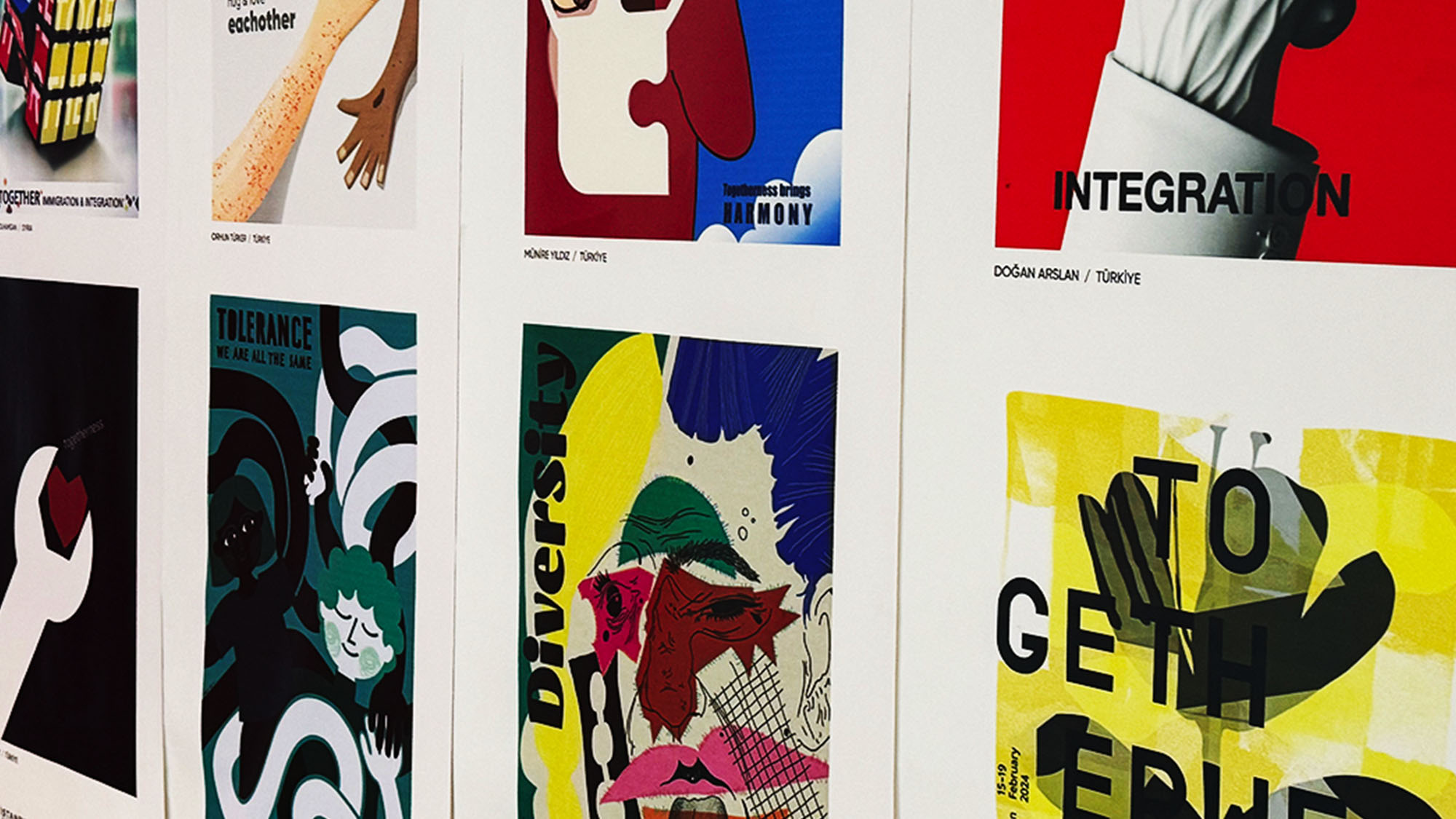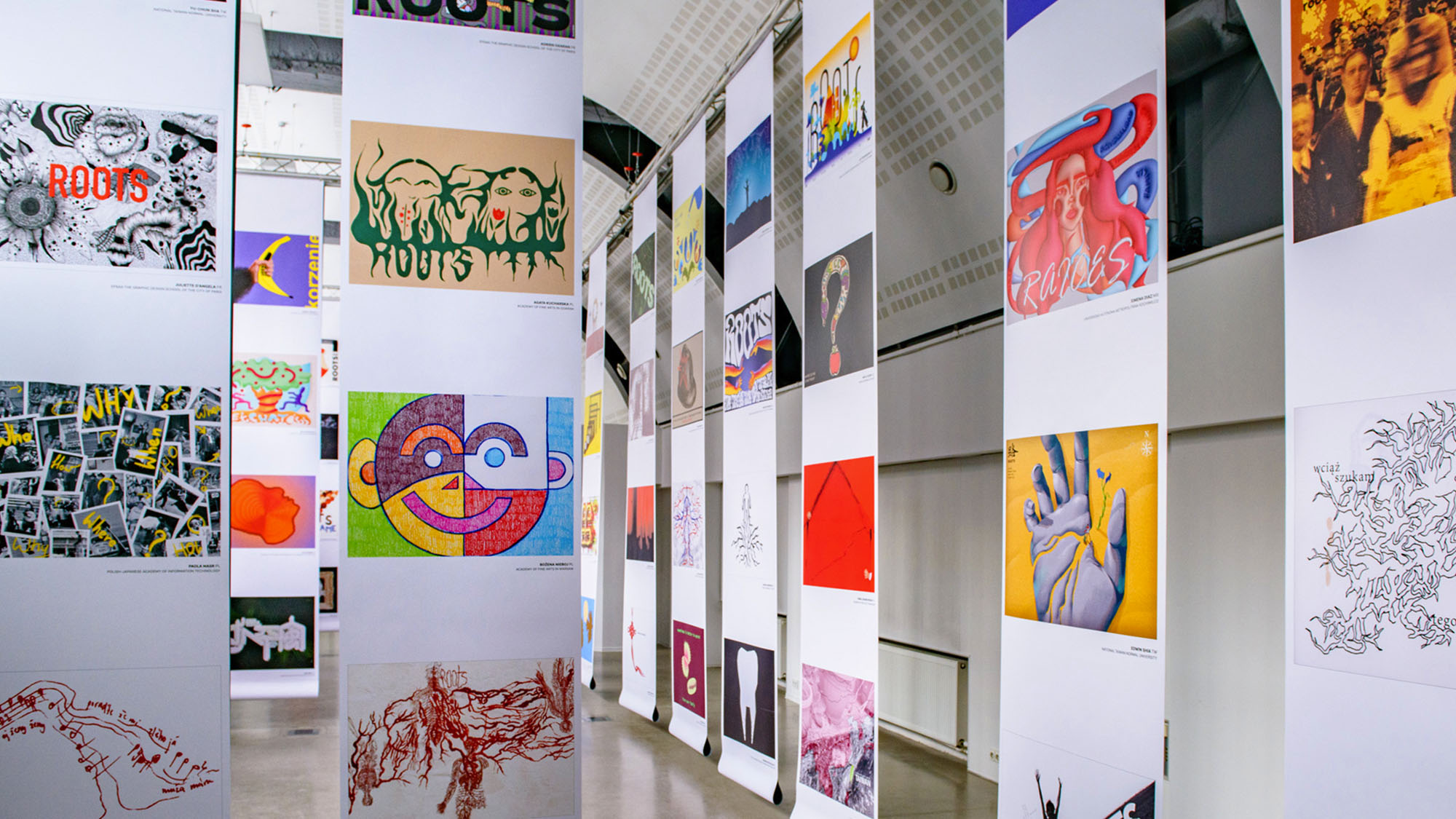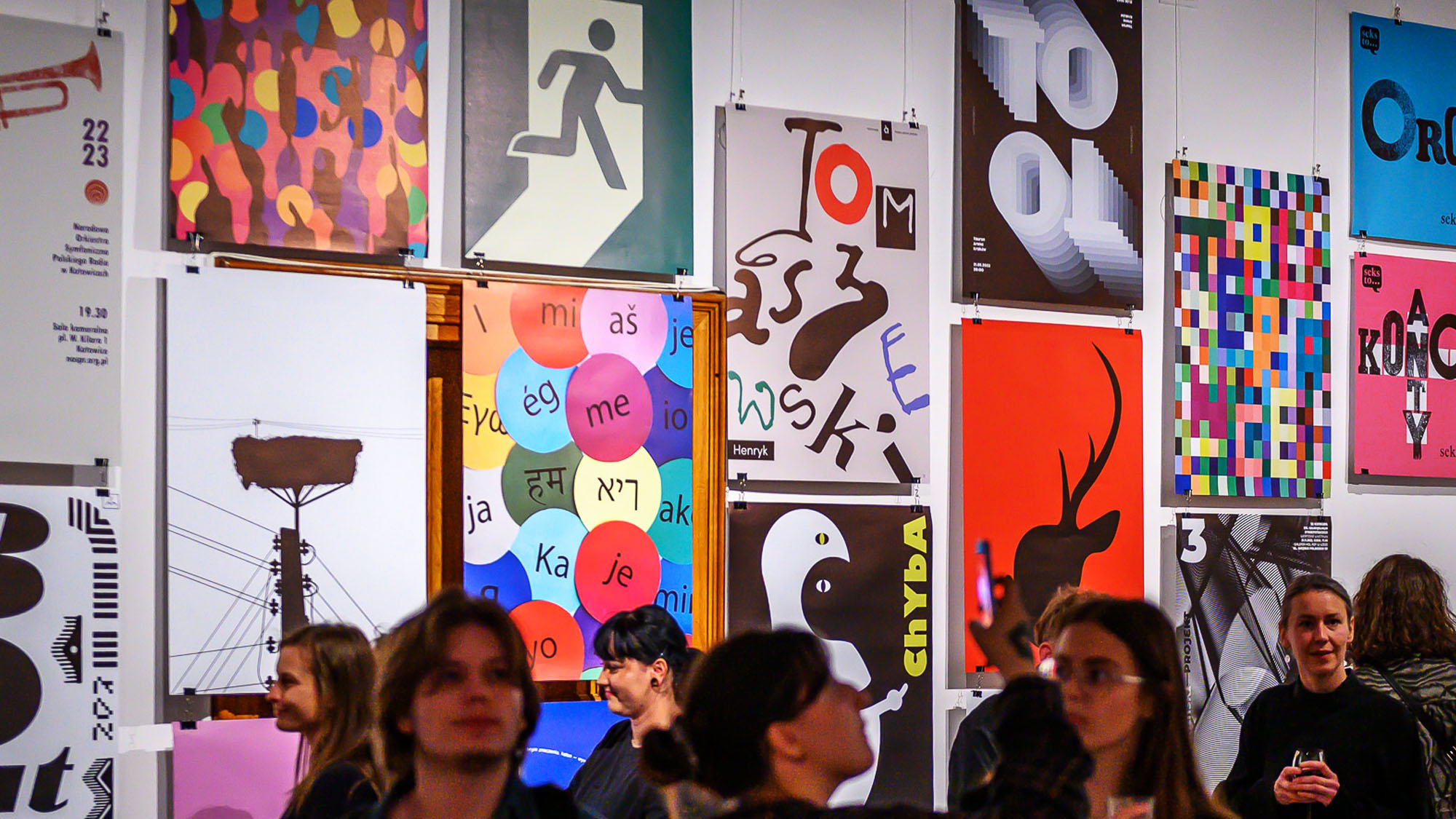CONCEPTS (Pojęcia)
Interpretations and Reinterpretations of Concepts in Written, Visual, and Artificial Intelligence Languages
International interdisciplinary project
Research project by: dr hab. Agnieszka Ziemiszewska, prof. PJATK,
Polish-Japanese Academy of Information Technology, Warsaw, Poland
Vimeo channel: https://vimeo.com/showcase/11487052
ACTIVITIES:
︎︎︎ AIGA DEC Weave 2025 Conference
Illinois State University, Normal, IL, USA
June 12–13, 2025
Cooperation in presentation (linqustic part of the project): Tifenn Gargam, HEI Bréquigny, Rennes, France
more
︎︎︎ IFPSC 2025 Conference
The 3rd International Fine Arts, Printing and Sustainability
Istanbul, Türkiye.
May 29-30, 2025
more
︎︎︎ Exhibition at The Lodz Design Festival
Lodz Design Festival, 2025
Łódź, Poland
May 20-25, 2025
more
︎︎︎ Exhibition in Warsaw, Poland
January 10-21, 2025
Gallery Medium
Polish-Japanese Academy of Information Technology
ul. Koszykowa 86, Warsaw, Poland
more
PARTICIPANTS
300 students from 22 universities from Japan, France, Iran, Turkey, Taiwan, Hungary, Ukraine, Poland and the USA
Participating Institutions:
- Polish-Japanese Academy of Information Technology, Poland (organising institustion)
- Academy of Art in Szczecin
- Academy of Fine Arts in Gdansk, Poland
- Academy of Fine Arts in Cracow, Poland
- Baha'i Institute for Higher Education, Iran
- Çanakkale Onsekiz Mart University, Turkey
- City Center of Isfahan University, Iran
- Fazili Art School, Iran
- Gifu City Women's College, Japan
- HEI Bréquigny, Rennes, France
- Hungarian University of Fine Arts, Hungary
- Iowa State University, USA
- Islamic Azad University, Iran
- İstanbul Üniversitesi-Cerrahpaşa, Turkey
- Kharkiv State Academy of Design and Arts (KSADA), Ukraine
- Kherson National Technical University, Kherson (Department of IT and Design), Ukraine
- National Taiwan Normal University, Taiwan
- Nicolaus Copernicus University in Torun, Poland
- Sepehr university, Iran
- Shayestegan Art School, Iran
- Soore University, Iran
- UAx Mentoring Programme
- Elia, The Netherlands - European League of Institutes of the Arts
- University of Warmia and Mazury in Olsztyn, Poland
- Prof. Christopher Scott, USA, Graphic Design Department at Iowa State University
- Prof. Tomoko Miyagawa, MFA, Japan, Department of Design Gifu City Women's College
- Prof. Gael Le Guillerm, France, Graphic Design DNMADE Visual Languages, HEI Brequigny
- Prof. Oleg Veklenko, Ukraine, Kharkiv State Academy of Design and Arts
- Andrea Szabo, Assistant Professor, Hungary, Hungarian University of Fine Arts, Budapest
- Prof. Krzysztof Białowicz, Poland, Faculty of Fine Arts, Nicolaus Copernicus University in Toruń
- Prof. Sophia Ling-hung Shih, Taiwan, National Taiwan Normal University, former vice president of lco-D
- Prof. Ayse Derya Kahraman, Turkey, Graphic Design Department, Istanbul Universitesi Cerrahpaşa
- Adam Klasa, PhD, Poland, Graphic Design Department, Academy of Art, Szczecin
- Prof. Tifenn Gargam, France, Humanities and Creative Writing, DNMADE Visual Languages, HEI Brequigny, IUT - University of Rennes
- Prof. Didem Çatal, Turkey, Çanakkale Onsekiz Mart University
- Babak Safari, MFA, Iran, Isfahan University Center
- Maja Starakiewicz, PhD, Poland, Academy of Fine Arts in Krakow
- Dr. Jaroslaw Bujny, Poland, UWM Olsztyn
Concepts play a fundamental role in structuring our relationship with reality, language, and culture. They allow us to articulate both abstract phenomena—ranging from universal ideas to highly individualized interpretations shaped by socio-political, cultural, and personal contexts. This project explores how concepts can be interpreted and reinterpreted across different expressive modes: written language, visual art, and artificial intelligence (AI). By juxtaposing human-authored statements and artworks with AI-generated images, the study highlights both the tensions and convergences between subjective meaning-making and machine-mediated interpretation.
Process
The project was initiated in 2023 in Poland. A brief was developed, and professors as well as students from 22 universities in Japan, France, Iran, Turkey, Taiwan, Hungary, Ukraine, Poland, and the United States were invited to participate. Each participant selected a single concept (one word) and presented it in three forms outlined in the brief:
- Written statement – a short text reflecting on the chosen concept.
- Artistic statement – a visual artwork (static and/or video) expressing the concept.
- Language extension – a list of 20 synonyms (prompts) or related terms.
The language prompts, together with the participants’ written descriptions, were then used to generate AI-based visual interpretations. This dual output – human and AI – served as the basis for comparative analysis.
Methodology
This study used a comparative interpretative methodology comprising:
• qualitative textual analysis of participants' statements to identify key conceptual themes,
• visual semiotic analysis of students' work and AI-generated results, with a particular focus on symbolism, abstraction, and points of divergence,
• systematic categorization of concepts and artifacts through the use of color-coded “emotional temperature zones” serving as symbolic indicators of the affective intensity of selected terms,
• an exhibition as a form of dissemination: in 2025, the results of the project were presented at the PJATK Gallery in Warsaw, where the works were exhibited alongside panels explaining the creative and interpretative processes.
A preliminary analysis of the collected materials emphasized the key role of human interpretation, while questioning the ability of artificial intelligence to “translate” human signals into a coherent visual language—especially with regard to the metaphorical and poetic references contained in human communications.
Preliminary Analysis
The preliminary analysis showed how artificial intelligence deviated from the authors’ intentions—sometimes amplifying meaning, sometimes distorting it. Human works reflected cultural, symbolic, and emotional contexts, while AI relied on statistical patterns, often producing reductive images. The project thus highlighted both the creative autonomy of human interpretation and the limitations of algorithmic image creation.
The project is ongoing and will involve further development and analysis.

︎ students
Mgadalenia Krasinov,
Damian Sorbian

︎ students
Anna Sosnowska, Karolina Derecka, Barbara, Mastalerz, Damian Sorbian, Dawid Wierzejewski.





︎ Diversity: Differences that Brighten the World
︎ Exhibition: Diversity: Differences that Brighten the World
︎Carolla Arts Exhibition Center,
Springfield, USA
︎10—11.2023

︎ students
Anna Jurczak, Anna Sosnowska, Barbara Mastalerz, Karolina Winczewska, Magdalena Kaczyńska, Natalia Ślusarska, Zuzanna Gocławska i Milena Łaska.



︎ Oesol International Typography Awards
︎ mention in the competition
Ulsan Culture & Arts Center, Nam-gu, Ulsan
︎Ulsan, South Korea
︎09.2023

︎ student
Kacper Molewski zdobył wyróżnienie na międzynarodowym konkursie Oesol International Typography Awards, South Korea



︎ Roots International Poster Exhibition
︎ honorable mention in the competition
︎Warsaw ︎24.06—31.07.2023

︎ students
Paola Nasr (wyróżnienie w konkursie), Milena Fedyna, Milena Łaska, Weronika Michalska, Morozova Yeva, Anna Mucha, Yarema Onyshkevych, Bugra Tunali, Olena Mykolaiv




︎ students
Anna Mucha, Anna Sosnowska, Barbara Mastaler, Julia Krajewska, Karolina Winczewska, Magdalena Kaczyńska, Magdalena Kasprzak, Zuzanna Urban










Studios ︎︎︎
The programs of all studios led by Prof. Agnieszka Ziemiszewska feature an open and dynamic structure, aligned with current trends in graphic design, typography, and related fields.
This approach allows students to undertake thesis projects with nearly unlimited forms and topics – ranging from artistic and experimental projects to practical, applied works, including elements such as budget, strategy, and various technologies.
Individual Approach to Projects
The scope and topic of thesis projects typically reflect students' experience from the years of study as well as their personal interests. Guidelines for each project are formulated individually in close cooperation with the main supervisor.
Pracownie ︎︎︎
Program wszystkich pracowni prowadzonych przez prof. Agnieszkę Ziemiszewską wyróżnia się otwartą i dynamiczną strukturą, dostosowaną do aktualnych trendów w grafice projektowej, typografii i pokrewnych dziedzinach.
Dzięki temu studenci mają możliwość realizacji projektów dyplomowych o niemal nieograniczonej formie i tematyce – od projektów artystycznych i eksperymentalnych po użytkowe, uwzględniające praktyczne elementy, takie jak budżet, strategia czy różne technologie.
Indywidualne podejście do projektów
Tematyka i zakres prac dyplomowych zazwyczaj odzwierciedlają doświadczenia studentów z ostatnich lat studiów oraz ich indywidualne zainteresowania. Wytyczne dla każdego projektu są ustalane indywidualnie.